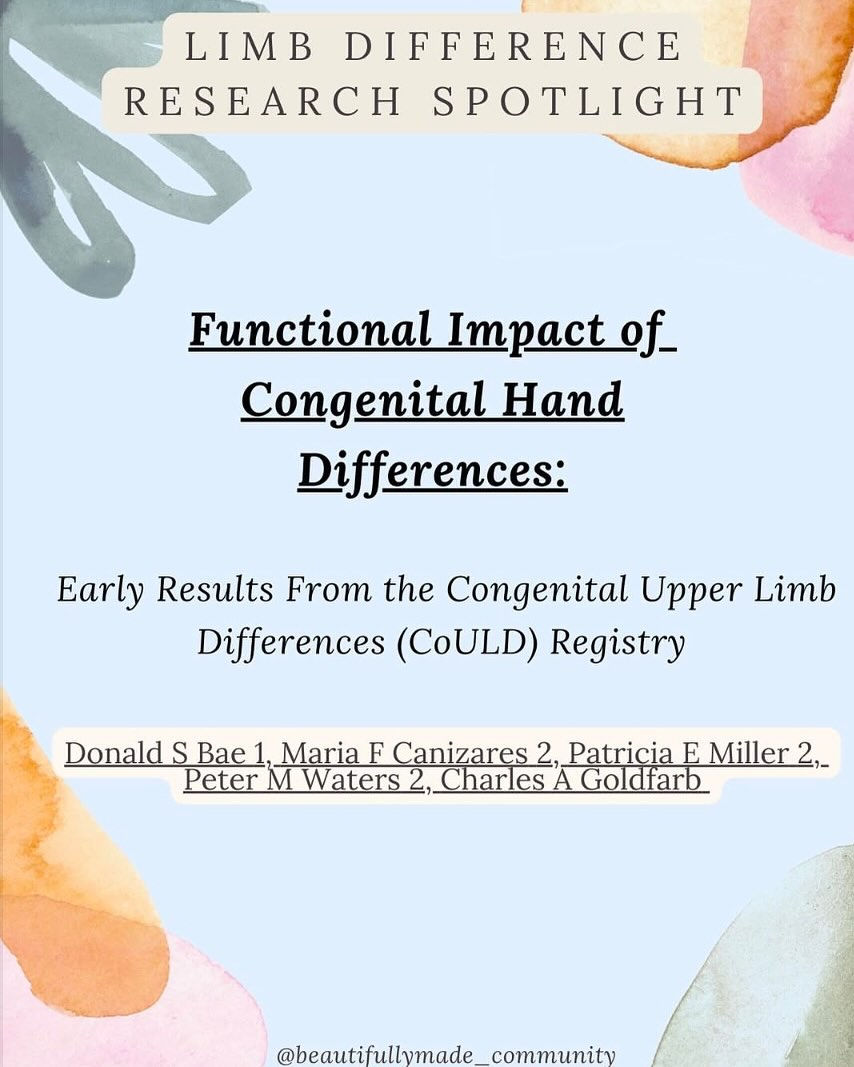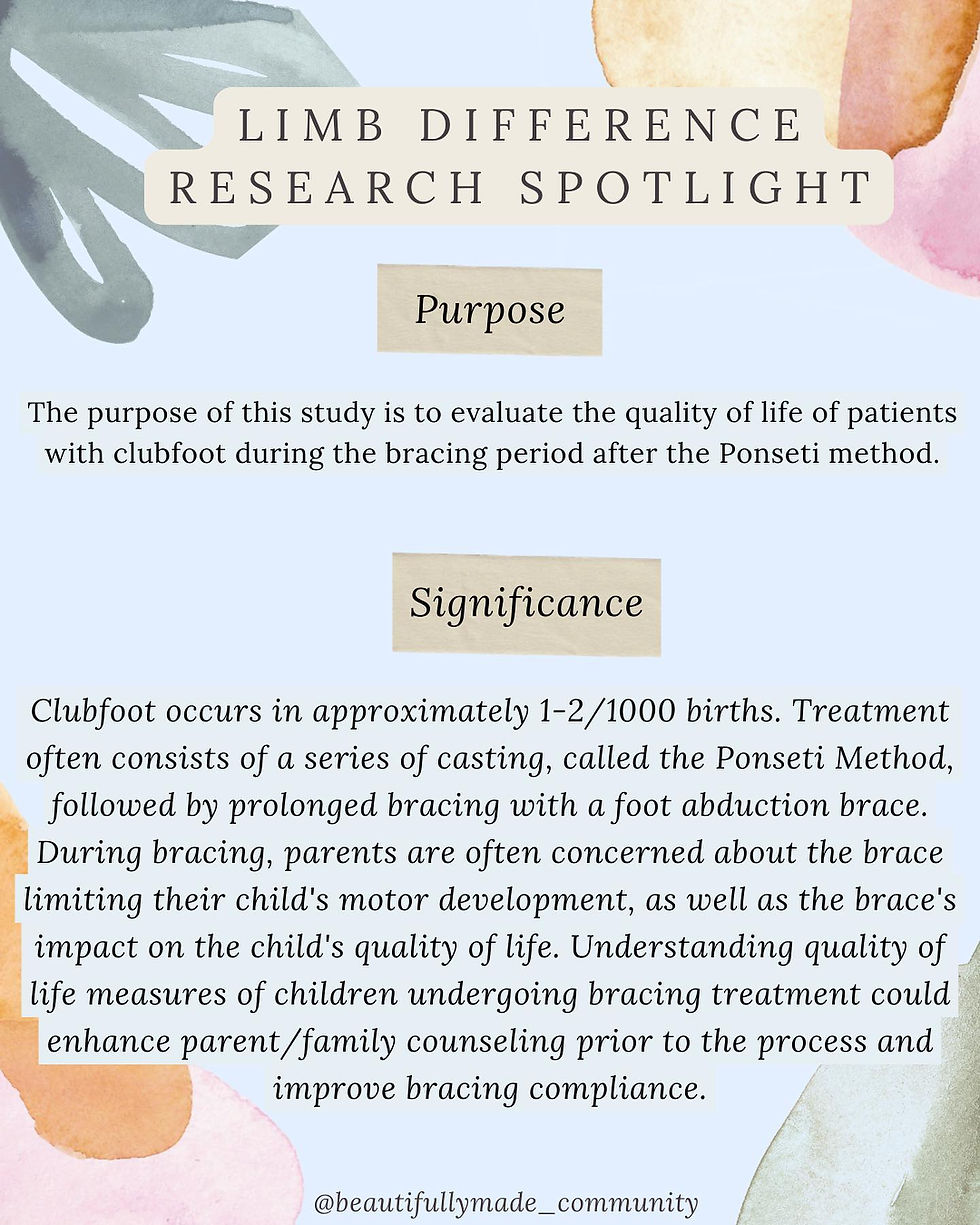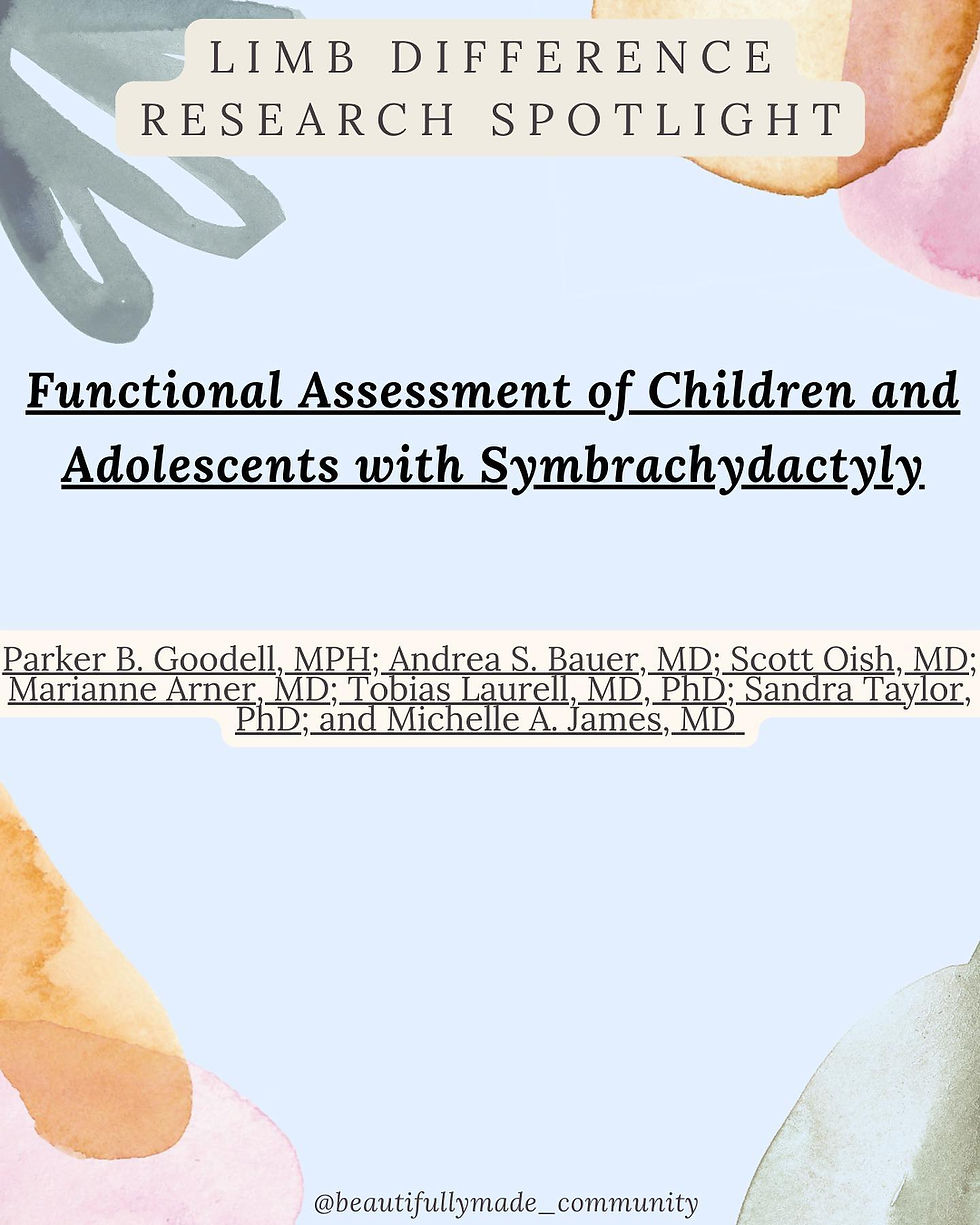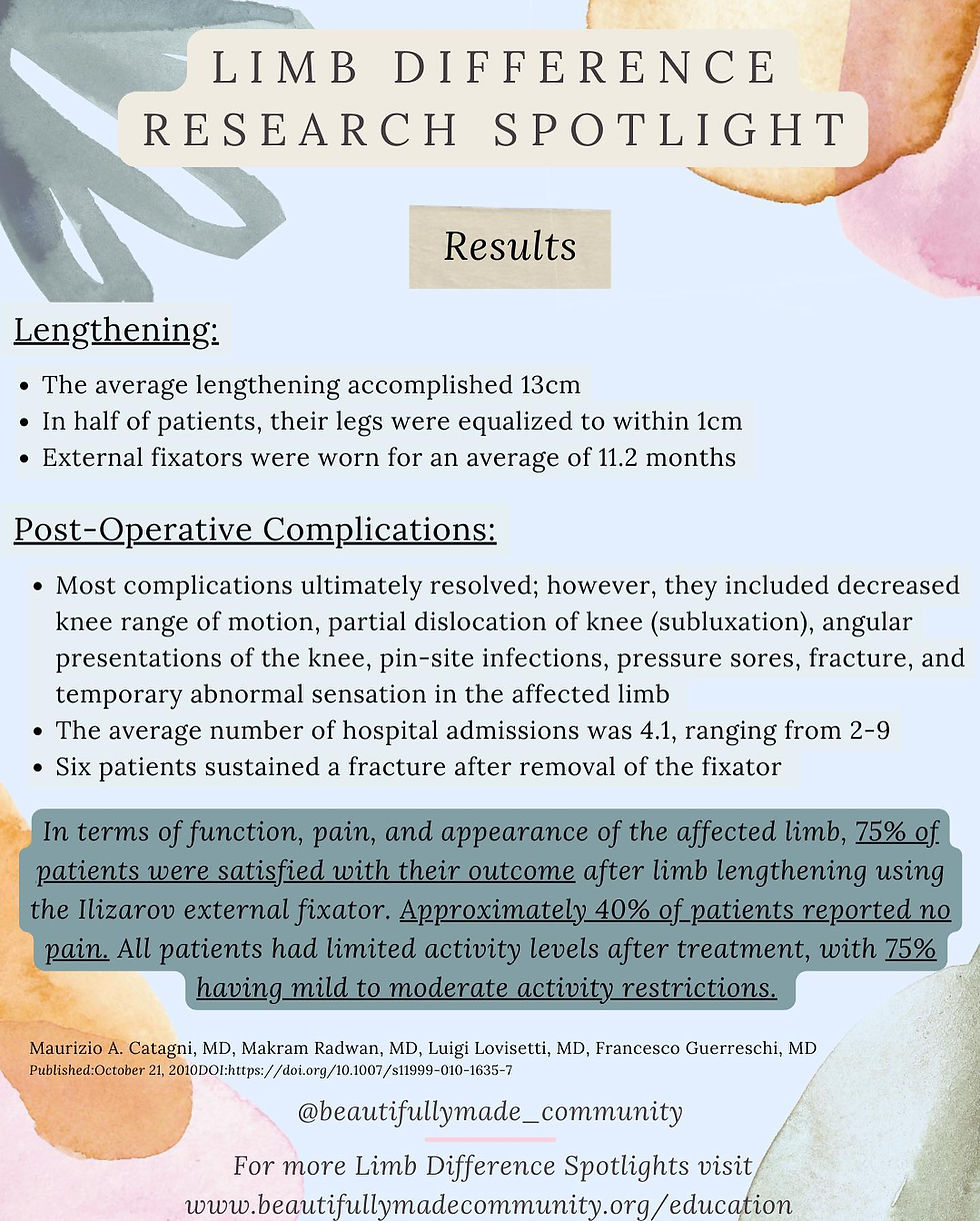
Disclaimer: The following educational page was done by our own research in our own paraphrased words. Please click on each photo to view further information, resources, and citations. This is in no way professional or medical advice, but a resource to help get others started in their own research.




“Functional Impact of Congenital Hand Differences: Early Results From the Congenital Upper Limb Differences (CoULD) Registry”
Purpose - Evaluate the functional, emotional, and social impact of congenital upper limb differences prior to treatment.
Significance - Understanding these areas beyond physical function provides more complete perspective on patient’s function, quality of life and well-being related to their condition.
Methods - Between June 2014 to March 2016, 2 pediatric hospitals enrolled 586 patients in the CoULD Registry. Of those, 301 patients were included in the study. Two patient-reported outcome surveys were given (Pediatric Outcomes Data Collection Instrument - PODCI and the Patient-Reported Outcomes Measurement Information System - PROMIS).
Results - Ultimately, children and adolescents with upper limb differences showed more positive emotional states and peer relationships compared to their peers, in addition to good mobility and overall function, despite reduced upper extremity function.
✨RESOURCES✨
▫️Authors-
📝Donald S. Bae, MD; Maria F. Canizares, MD; Patricia E. Miller, MS; Peter M. Waters, MD; Charles A. Goldfarb, MD
▫️Websites-
▪️ https://www.jhandsurg.org/article/S0363-5023(16)31066-8/fulltext




“Quality of Life of Clubfoot Patients during the Brace Period of the Ponseti Method”
Purpose - The purpose of this study is to evaluate the quality of life of patients with clubfoot during the bracing period after the Ponseti method.
Significance - Clubfoot treatment can consist of a series of casting, called the Ponseti Method, followed by prolonged bracing. During bracing, parents are often concerned about the brace limiting motor development, as well as the impact of the brace on the child's quality of life. Understanding these could enhance parent counseling and improve bracing compliance.
Methods -80 children with clubfoot and 238 healthy children without clubfoot were included. Quality of life measures were assessed using the TNO-AZL Preschool Quality of Life Questionnaire (TAPQOL).
Results - Overall quality of life was considered 'good' during the bracing period with the following findings:
Children with clubfoot had decreased scores in the sleeping, motor function, lung problems, and skin problems categories during bracing. These scores improved to normal ranges after the bracing.
While patients with clubfoot scored lower in the 'skin' section, it is known that extended brace wearing can cause temporary local skin issues due to the material of the brace and the position of the foot.
Compared to children without clubfoot, there tends to be a mild delay in gross motor function. The majority of the milestones are delayed 1.5 months, and independent walking is delayed approximately 2 months. Patients with clubfoot scored normally in motor function following the bracing.
✨RESOURCES✨
▫️Authors-
📝Arnold T. Besselaar; Laura Melis; M.C. (Marieke) van der Steen
▫️Websites-
▪️ https://pubmed.ncbi.nlm.nih.gov/36049263
In other words: Before the baby is born the body parts that show signs of ABS are entangled in string-like bands. If a band is tight enough, the constriction may cause an amputation before birth. Other times, the amniotic band may only cause a small dent around a finger or limb. Deeper bands can cause serious swelling, cut off the flow of blood, or keep that part of the body from growing in the typical way. This includes hands, feet, fingers, toes, etc.




Clubfoot: True clubfoot is characterized by abnormal bone formation in the foot. There are four variations of clubfoot, including talipes varus, talipes valgus, talipes equines, and talipes calcaneus. In talipes varus, the most common form of clubfoot, the foot generally turns inward so that the leg and foot look somewhat like the letter J. In talipes valgus, the foot rotates outward like the letter L. In talipes equinus, the foot points downward, similar to that of a toe dancer. In talipes calcaneus, the foot points upward, with the heel pointing down.
To prevent future complications with walking, Orthopedic surgeons work with parents to straighten and strengthen the muscles in the foot within the first few weeks after the baby is born. The Ponseti method (which involves casting and a special boot to hold the foot in place) or French method (which consists of stretching, massages, taping and splinting) are used, leaving surgery as a last resort.




Congenital Amputation
Congenital amputation is a condition where a person is born without a limb or portion of a limb. About 1 in 2,000 babies are born with congenital amputation each year.
The condition is often caused by amniotic band syndrome, which occurs when a free floating piece of amniotic sac tissue becomes entangled with a baby’s developing limb, cutting-off the blood supply and halting development. Amnion ruptures, a condition where the internal amniotic sac becomes separated from the outer portion, contributes to free-floating tissues. However, the exact causes of most cases cannot be exactly pinpointed.
Children with congenital amputation are usually not affected by any other disabilities and are often very resourceful in compensating for their underdeveloped limb, with many being able to fully participate in most activities.



















































